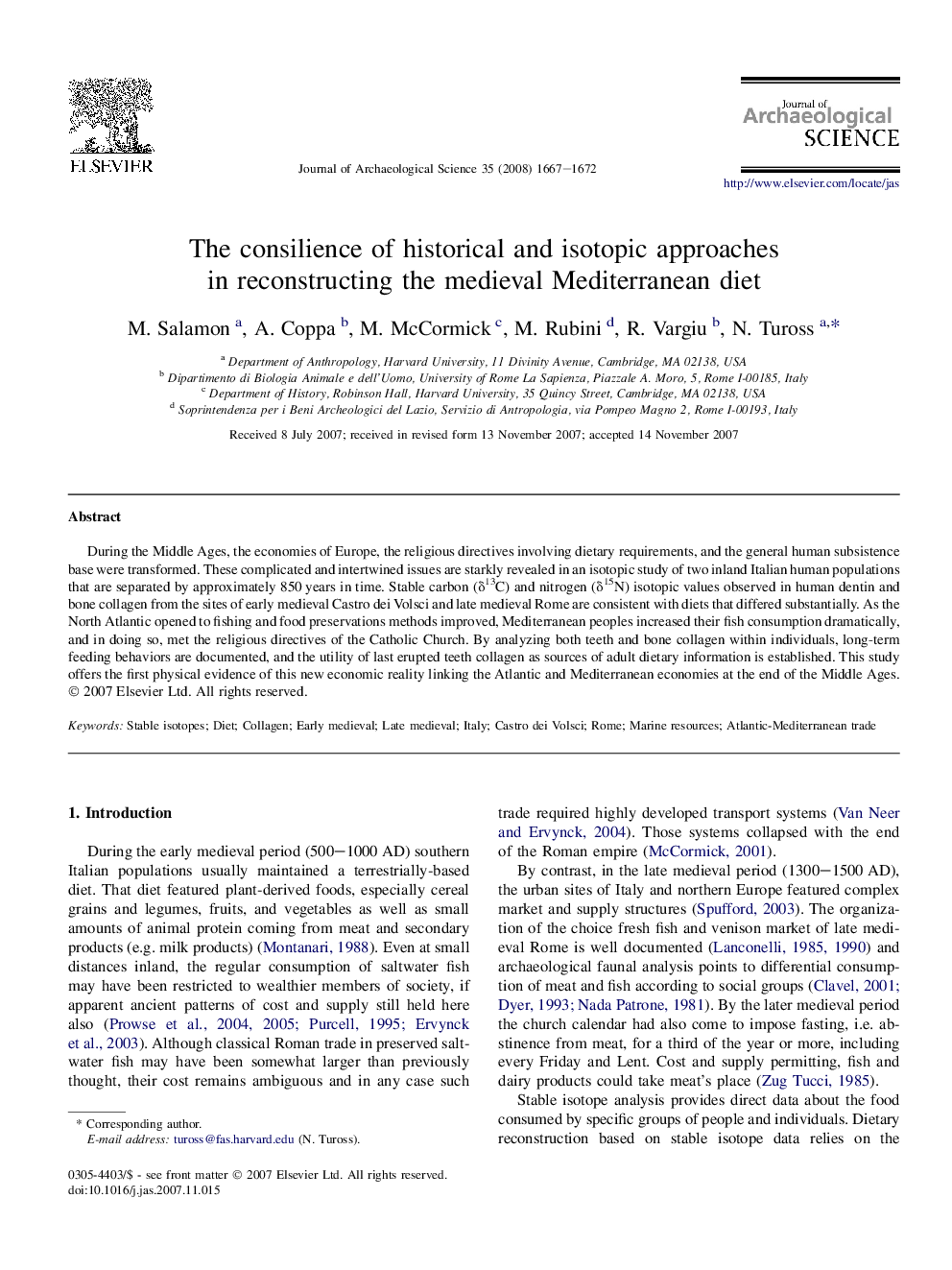| Article ID | Journal | Published Year | Pages | File Type |
|---|---|---|---|---|
| 1037488 | Journal of Archaeological Science | 2008 | 6 Pages |
During the Middle Ages, the economies of Europe, the religious directives involving dietary requirements, and the general human subsistence base were transformed. These complicated and intertwined issues are starkly revealed in an isotopic study of two inland Italian human populations that are separated by approximately 850 years in time. Stable carbon (δ13C) and nitrogen (δ15N) isotopic values observed in human dentin and bone collagen from the sites of early medieval Castro dei Volsci and late medieval Rome are consistent with diets that differed substantially. As the North Atlantic opened to fishing and food preservations methods improved, Mediterranean peoples increased their fish consumption dramatically, and in doing so, met the religious directives of the Catholic Church. By analyzing both teeth and bone collagen within individuals, long-term feeding behaviors are documented, and the utility of last erupted teeth collagen as sources of adult dietary information is established. This study offers the first physical evidence of this new economic reality linking the Atlantic and Mediterranean economies at the end of the Middle Ages.
